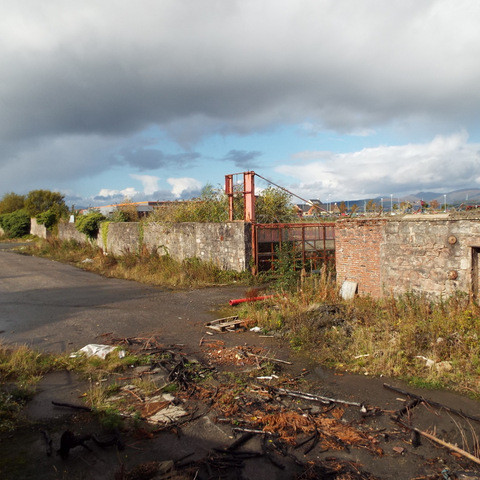Paul Devine: Preventing the creation of additional vacant and derelict land on Scotland
Scottish Futures Trust’s Paul Devine responds to the Scottish Land Commission’s report which highlighted that 11,000 hectares of land lies vacant or derelict.

How do you reuse land and buildings when they are no longer needed? And how do you stop these assets from sitting vacant and becoming derelict eyesores?
Answering these questions is critical to making the best use of Scotland’s land and buildings and in preventing a legacy of further abandoned sites. Scotland already has almost 11,000 hectares of vacant and derelict land – an area roughly twice the size of Dundee.
Recently, the Scottish Land Commission’s Vacant and Derelict Land Taskforce involving public sector infrastructure experts, the Scottish Futures Trust (SFT) published a series of recommendations entitled ‘Transforming Scotland’s Approach to Vacant and Derelict Land’.
These recommendations are a call to improve the stewardship of Scotland’s land and buildings and encourage early thinking on remodelling their use to prevent the creation of tomorrow’s challenges. They recognise the need for a co-ordinated solution as well as funding and resources to enable sites to be adapted and reused for uses that will make a positive contribution to Scotland’s economy and support the move to a net zero carbon country.
The report underlines the importance of SFT’S existing work with public bodies across Scotland to maximise the use of the buildings and land they own and examining the issue of how such land impacts upon communities.
With around one third of all vacant and derelict land in public ownership, the public sector has a significant role to play in bringing such sites back into productive use, and indeed prevent
ing them from becoming vacant and derelict in the first place. The recent publication of the Scottish Government’s Infrastructure Investment Plan, with emphasis on the reuse of assets, and a new government-wide infrastructure investment hierarchy, further reinforces the importance of this approach.
SFT has been working with a number of public bodies, supporting them to adopt a ‘programme-wide approach’ for the sale of their surplus assets. Over the last number of years this has resulted in the sale of over 125 assets with the combined benefits of financial receipts, savings in maintenance and holding costs, economic investment and place-making, together with the delivery of housing, commercial and community uses.
Acknowledging the recommendations within the Infrastructure Investment Plan on the reusing of surplus assets, there is a need for appropriate resourcing, stakeholder engagement, funding and sufficient lead-in periods to prepare sites for sale. Working with public sector partners, SFT’S experience in areas such as planning, legal and commercial negotiations has had a positive impact. And now more than ever land and buildings have a key role to play in the delivery of a net zero carbon economy, inclusive growth and place and the publication of the Vacant and Derelict Land Taskforce has reinforced this.
There is therefore a need to ensure that sufficient additional finance and resources are targeted in the right way at the right time to address, and avoid, the creation of additional vacant and derelict land on Scotland.
- Paul Devine is senior associate director at the Scottish Futures Trust and leads SFT’S land team
This article originally appeared in The Scotsman and is reproduced here with permission of the Scottish Futures Trust























